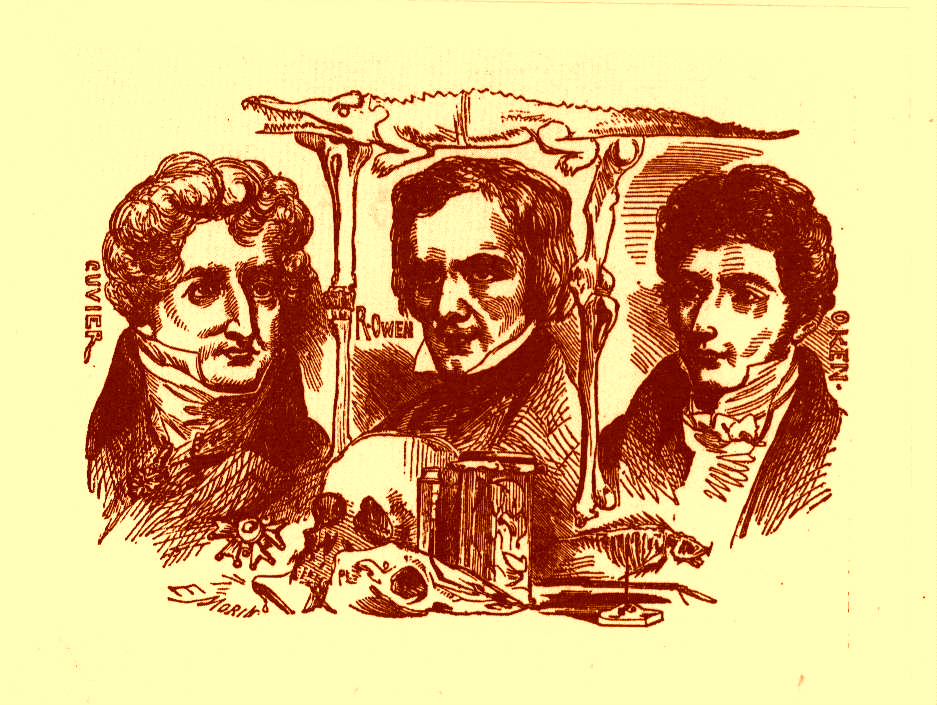|
New Paradigm in Evolutionary
Biology and
Palaeontology |
"The reductionistic faith has been fruitful in
stimulating many detailed investigations, but there is no evidence that it will
ever provide convincing explanations for the holistic properties of organisms at
any level of complexity."
(from Rupert Sheldrake: "The Presence of the
Past: Morphic Resonance and the Habits of Nature")
"The fossil record is the most obvious evidence of the
history of life and should be the final arbiter in deciding between opposing
phylogenetic as well as evolutionary theories."
(from Vaclav Petr: "Critical Introduction to
the Theory of Natural Selection", a Czech textbook)
This site is especially dedicated to non-Darwinian
approaches to evolutionary biology and palaeontology and to the research on
Lower Palaeozoic echinoderms
One of the basic problems is that of the functional unity of an
organism and transcendental morphology, in other words it is the problem of the
concept of history and structure, process and pattern, external behaviour and
internal meaning, function and form - of the two distinct explanatory modes in
the biological thought, symbolized often by Cuvier and Geoffroy Saint-Hilaire's
famous debate (1830).

This historical picture of Richard Owen, flanked by Georges
Cuvier and Lorenz Oken (from Owen's "On the Principal Forms of the Skeleton
and the Teeth", 1856) symbolizes a synthesis between function and form,
process and pattern, or functionalism and transcendentalism in vertebrate
palaeontology.
Who was Richard Owen? He was originator
of the distinction between homology and analogy, interested in Cuvier's work on
functional adaptation as well as German non-materialistic science of form
(derived from idealism of the romantic "Naturphilosophie"). The latter,
transcendental aspect of the biological form (intrinsic structural order of it),
was prime for Owen. He suggested that organismal morphologies are variants on
perfect or ideal forms (archetypes or "primal patterns"). He also proposed
"secondary causes" (metagenesis) which were the means of "translating the
Word into flesh" (paraphrased New Testament, John 1, 14).
Even some of today's post-modern neo-Darwinists are aware of the problem
of the principles ruling the body architecture of animal bauplans but generally
are unable to understand that the material genes are not the only determinants
of living things and that the true essence rather lies in the immaterial factors
that govern development (morphogenesis). Convergent evolution, in which very
similar animals arise from quite different evolutionary histories, attracts more
and more attention. It is extremely important to recognize that in
morphogenesis, constraints and regularity themselves cannot be explained in
terms of natural selection.
It is generally agreed that August Weismann was fleshing out
the essentials of neo-Darwinism and replaced the original Darwin's
"mysterious laws of the correlation of growth" (mentioned in the
Origin of Species) with a conception of inherited material elements (now
genes, themselves immortal to the core). His theory of such a simple material
determinant, in other ways fully compatible with the Darwin's Theory of Natural
Selection, suggested a surprisingly easy explanation of the form of any
organism. It was very useful, because it inspired modern palaeontological
research in the fossil record and has given our natural science its lacking
historical depth. Neo-Darwinism (Weismannism and the Modern Synthesis) became
the governing mode of thought among both biologists and palaeontologists. But
its reductionism, understanding the form as a mere "frozen accident" preserved
by the action of natural selection, had and has nothing to say about how new
forms of organisms arise. Neo-Darwinian morphology changed to a strictly
historical science, stressing only the role of genes and genealogies, and
elevating historical process to a primary explanatory principle in natural
sciences.
Some present leading structuralists, esp. the British
biologist Brian C. Goodwin (e.g. in his book entitled like one of the famous
Kipling's Just So Stories: "How the Leopard Changed Its Spots",
1994), stress that all cells of a given body contain identical copies of DNA but
during morphogenesis develop differently. Further, that proteins have incomplete
autonomy in self-bending and self-shaping into the form of a living organism and
that there are unicellular organisms that will partially regenerate their
complicated surfaces even if the nucleus itself is removed. The new "generative
paradigm" (as opposed to "evolutionary paradigm") would turn scientists from
looking for the historical "just so stories" to search for Aristotle's "formal
cause" or archetypes of form, establishing a "supra-molecular" causal principle
(some scientists, esp. the British biologist Rupert Sheldrake, go further,
suggesting not only the existence of morphogenetic fields themselves but also of
a Spirit that is both the goal and the ground of the entire Universe, a creative
consciousness that transcends the Universe, that is the source of its existence
and of the laws that govern it).